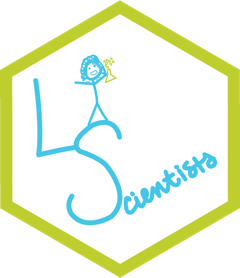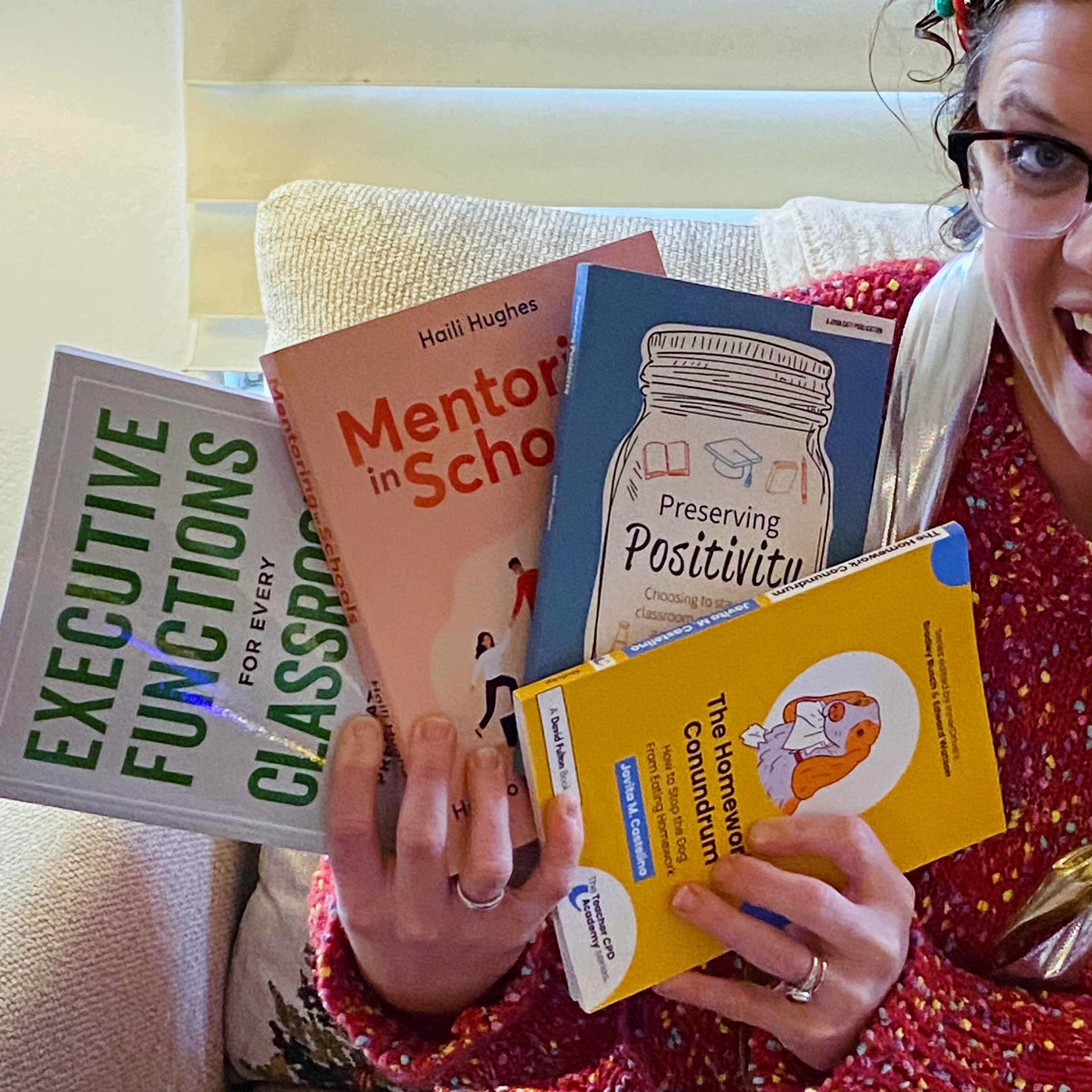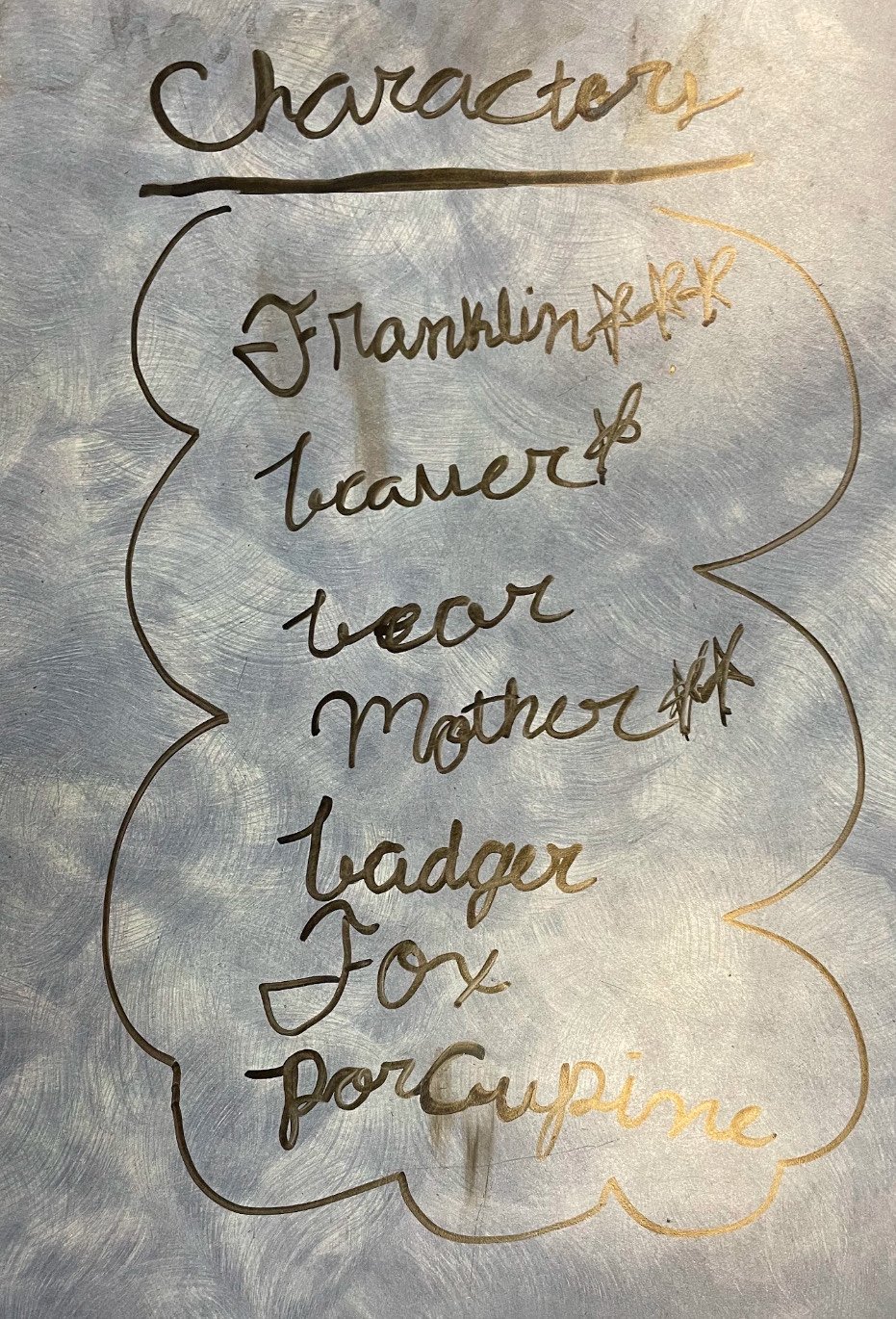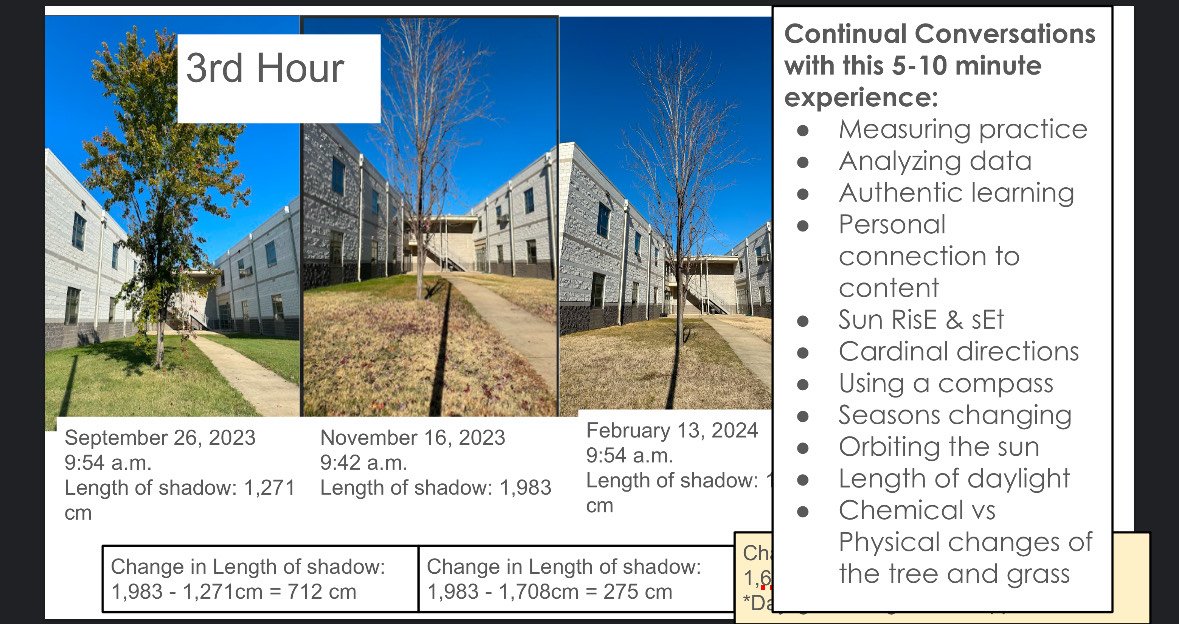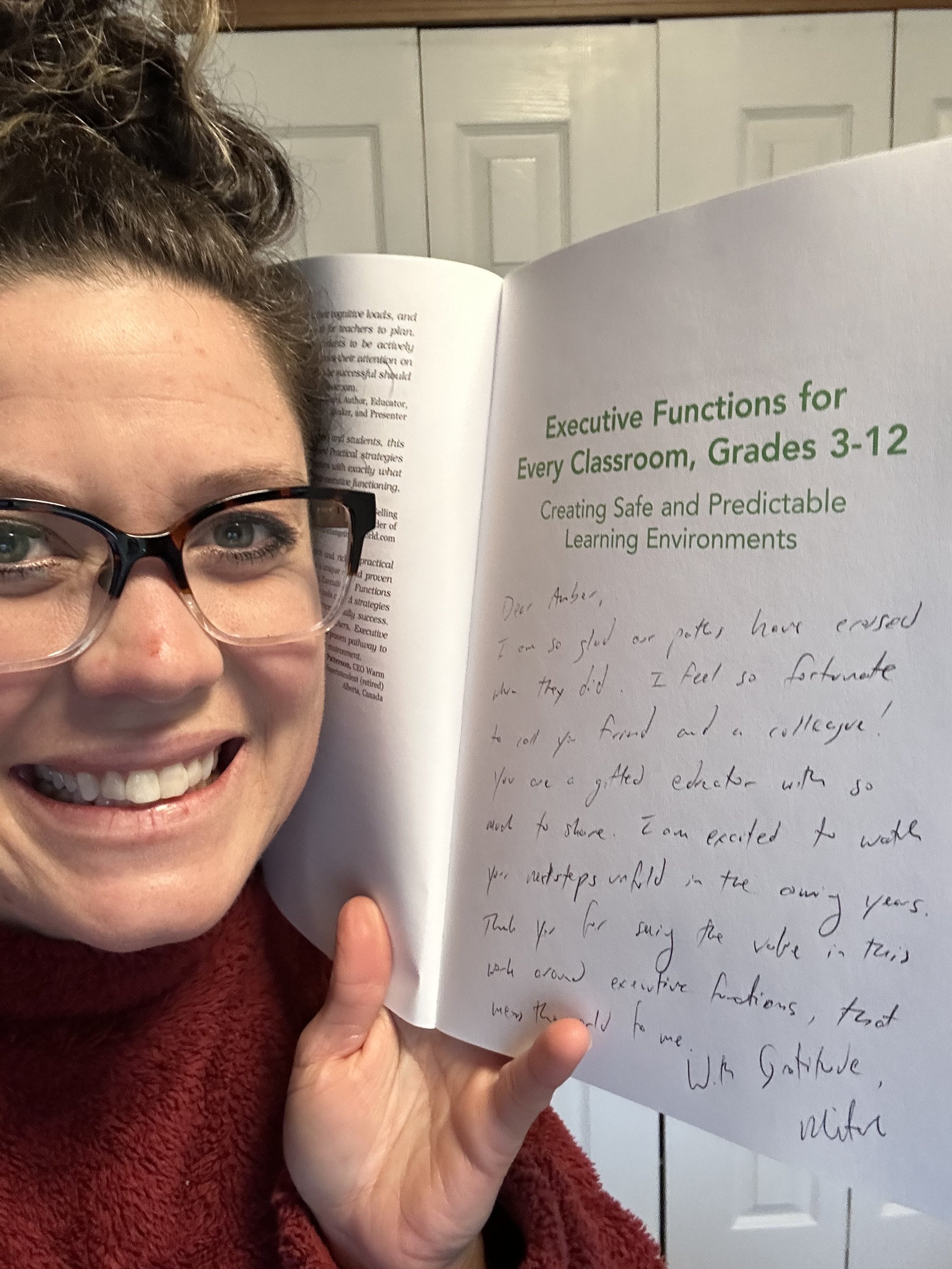FEATURED EDUCATOR: Amber Haven
Amber is a seasoned educator with over 15 years of classroom teaching experience. Since 2018, she has integrated the principles of the science of learning into her teaching practices. Her innovative approach was highlighted in Powerful Teaching: Unleash the Science of Learning by Pooja Agarwal and Patrice Bain. Additionally, her classroom strategies are featured in the book Powerful Classrooms by Patrice Bain.
Amber has shared her expertise as a speaker at several prominent events, including ResearchED Delaware (2024) and the Thriving Educator Summit (January 2025). She is also scheduled to present at ResearchED New York in March 2025. Through her social media platform, @EducatorHaven, Amber provides educators with practical and relatable methods to incorporate the science of learning into their classrooms.
What is your favorite thing about teaching?
I love knowing that students in my classroom feel SUCCESS! They know that my goal is not to trick them; it’s not to set them up to fail. My students know that I am on their team, that I am going to hold them accountable, that I will be in continuous contact with their guardians, that they are going to be responsible for telling their adults about their grades and their assignments. I explain to students that we all have very important jobs and that we will work together all year long. Students hear me explicitly explain that I plan to teach and encode necessary information, that they are going to store it, and that I am going to help them retrieve it many times over the course of the year. Students are a part of the process, and because of that, they truly understand what they learn and they hold themselves accountable in the process.
I love knowing that the lessons we learn in class stretch beyond our classroom walls! I love receiving emails from students’ parents that say, “Mikayla made me take this picture of the moon and send it to you,” or, “Jack saw all of these spider webs in our grass this morning and made me promise to send you an email about it.” I receive these emails from adults during that school year and also multiple years after I taught their students in 5th grade! I just adore watching the messy learning process unfold for my students, and one of my favorite things is instilling a growth mindset and opening up their desire to learn about the world around them (and within them!). I’ve attached a photo of a decaying plant among living plants…seems maybe gross and strange to include this photo, but it is one that I received from a student who saw it in their home life, thought it was interesting, and wanted to share it with me!
Do you have any fun facts about yourself that you’d like to share?
Fun facts about me….ummmmmm…..I’m pretty average…I’m always behind on my family’s laundry, I love filling online shopping carts and never pressing the “checkout” button, and my least favorite chore is putting clean dishes away from the dishwasher…but that makes me approachable and relatable, right?
How do use the science of learning in your classroom? Describe one activity in detail so other educators can use it too!
I. One of my favorite ways to incorporate spaced retrieval practice is by using content-specific language and concepts as my class attention grabbers. I used to say things like, “Class, Class?” And my class would reply with “Yes, Yes!” Or, “Ready set?” And the class reply, “You bet!” And all sorts of trending callbacks. However, I shifted these choral responses to be purposeful. When students are working together in groups or partners, or if things got a bit noisier than my liking, I’ll call something out like, “Whaaaaaaaaaaat is the definition of density?” And the class replies, “Density is how tightly packed matter is in an object.” Or, if we are reading a novel in reading class and we come across the word, “Whoosh!” Then I sing, “O-n-o——“ and the students chime in, “m-a-t-o——“ and we all finish together, “p-o-e-i-a….onomatopoeia!” Any definition or concept you need students to remember can be turned into a chant, just like the trending callbacks. Give them a rhythm, give them a tune, give them hand motions or dance moves, and use them as your class callbacks!
II. I also love gallery walks. When students work independently at their desks or tables, I ask them to write neatly and thoroughly. After their independent time, the class goes on a gallery walk around the room. Each student has a marker and can place a star next to a word or phrase on another student’s work that aligns with what they also thought. However, students are not required to make marks on others’ work. What is required, though, is going back to independent work spaces after the gallery walk and changing, omitting, or adding to their own work. Afterwards, I call on volunteers (or cold-call on students) to share their well-formulated response to a complex question!
III. Spacing and interleaving is a huge component of my science class. Starting at the beginning of the school year, I expose students to all 4 major focus standards I’ve identified for the year. 3 days per week, we use direct vocabulary to research and explore the concepts. By the time we reach the actual unit within the school year, the information has been spaced and retrieved every week, the vocabulary has been learned, real-life connections have been made, and students can dig deeper into the material with true understanding. An example of the way I incorporate this is in the “weather wheel” that is attached.
IV. After directly teaching content, I take my science students outside to explore the concepts and apply their knowledge. In the image attached that shows data and a tree in our school courtyard, you can see that students have been taught how to measure in centimeters. They have also been taught about the effects of the sun rising and setting, moving across the sky as the earth rotates, and changing angles in the sky as the earth revolves around the sun. Spacing these concepts throughout the year and getting students outside to observe, measure, and record the actual data provides learning opportunities that student can then apply to their own lives. It’s super empowering for them to see that what they learn in class is actually applicable to the real world.
What are your favorite resources for learning about learning?
My school, and home, shelves are filled with educational books written by my edu-icons. I also regularly attends webinars and conferences to network and expand my educator community. Additionally, I follows many accounts on LinkedIn to continue growing and expanding my knowledge of the science of learning. I also follow verified Instagram accounts to micro learn as I browse different accounts.
What obstacles have you faced when trying to apply the science of learning in your classroom? How did you overcome them?
There are so many resources out there that I’m finding it difficult to keep up with the research. To stay on top of my teaching, analyzing my students’ learning, grade papers while providing individualized feedback, collaborate with my teaching team, all while fostering relationships with students and their families, is already completely time-consuming. My commute to work is only 6 minutes long, and 4 of those minutes include having two of my kids in the car with me. I yearn to listen to podcasts, but my commute is not conducive to that goal.
What advice do you have for other educators?
If diving into the science of learning feels like a daunting task, or if it doesn’t feel as accessible as social media influencers, or if it makes you feel like an imposter…I challenge you to stop that negative mindset right there and know that there are so many down-to-earth, helpful, supportive researchers out there who have your best interests in mind. There is an entire world for you that will open up. You will feel inspired, seen, validated, and appreciated. Your ideas, your nuances, your strategies and techniques already follow many tools within the science of learning! How amazing could you feel when you realize this and experience the research behind your intuition and experiences!
